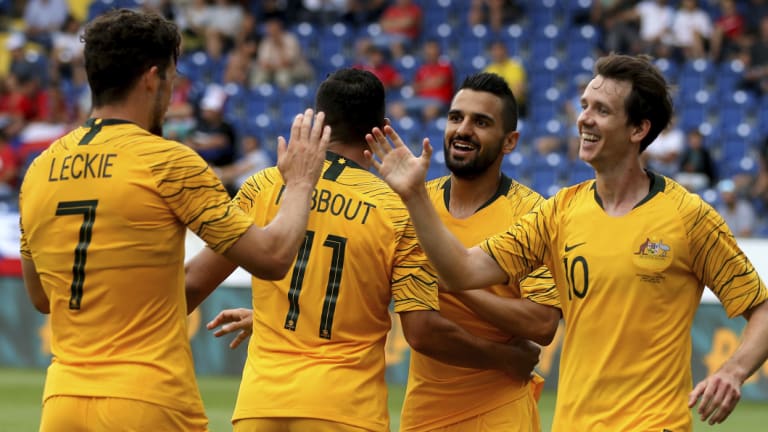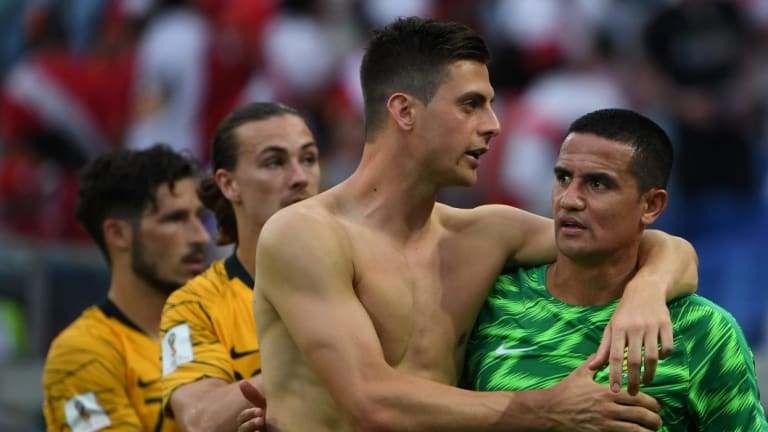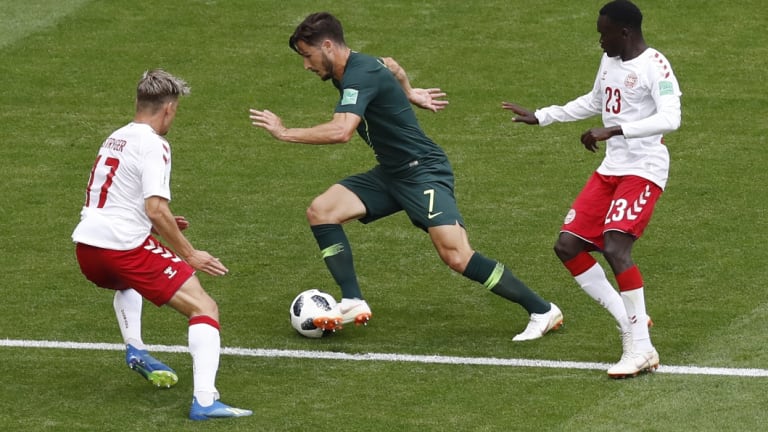The need for speed: Arnie’s attacking plan for the Asian Cup

Where there was once only a target man now stand three quick, interchangeable strikers. Socceroos coach Graham Arnold has done away with the traditional centre-forward for Australia's Asian Cup title defence in favour of versatility, volume and pace for the Socceroos' new-look attack.
The biggest absences from his 23-man squad for the tournament announced on Thursday were Australia's two largest forwards. Regular figurehead at Australia's attacking focal point, Tomi Juric, was cut from the squad while there was no room for the other big striker in Apostolos Giannou.

Raw pace: Mathew Leckie, Andrew Nabbout, Aziz Behich and Robbie Kruse celebrate a goal against the Czech Republic. Credit:AP
While Juric was omitted due to a lack of form and fitness, off the back of a shortage of game time with his club Luzern, the broader message from Arnold was delivered loud and clear: "The need for speed is up front," he said.
In declaring as much, Arnold tore up of the country's conventional view on how to attack. It follows a 2018 World Cup that failed to deliver a goal away from the penalty spot for Australia and a qualification campaign where the Socceroos struggled to score from open play.
Advertisement

Need for speed: Australia won't have target men like Tomi Juric or Tim Cahill at the 2019 Asian CupCredit:Dean Lewis
Those were years where the team relied heavily on a single saviour in front of goal and it's by no coincidence the Socceroos' first tournament in 13 years that will not feature Tim Cahill will also have no place for a target man. Instead, the burden to score will be shared by many and only the quickest.
Instead of a lone striker – the most common system for the national team over the past eight years – Australia will play with three striking options all underpinned by pace. Entrusted in those key roles for the Asian Cup are: Matt Leckie, Jamie Maclaren, Andrew Nabbout, Chris Ikonomidis, Martin Boyle, Awer Mabil, Robbie Kruse and Tom Rogic.
They offer different traits but all eight share similarities. None are short on speed and all but the nimble goal poacher Jamie Maclaren can play at least two different roles.
"If you look across the front-line, theres eight players who can make a difference," Arnold said. "Theyre technically very good but quick."

Sprint finish: Renowned for his quickness, Mathew Leckie will have plenty of support under Graham Arnold's new approach.Credit:AP
Narrow wingers in Arnold's adapted 4-2-3-1 system have already been fruitful for the Socceroos coach throughout his trials. Eight goals in three games, scored by six different Australian players and all but one goal struck from open play. It's a system that relies heavily on fast forwards overloading the box. Instead of having just one big figure in the area, there will now be a minimum of three.
"Youve seen the way I expect us to play. The last three games has shown you that with three No.9s, the way we suffocated South Korea, we didnt let them out of their own half with great pressing and a lot of high energy and thats what I expect over in the UAE," Arnold said.
For the most central attacking positions, Arnold will rely on Maclaren, Nabbout and Leckie while the supporting striking roles will be varied, mobile and adaptable mid-game.
"If you look across that whole front-line, all of them can play different roles," Arnold said. "We will be flexible in the front half of the field."
Dominic Bossi is a football reporter with The Sydney Morning Herald.
Most Viewed in Sport
[contf] [contfnew] 
Australian Breaking News Headlines
[contfnewc] [contfnewc]




